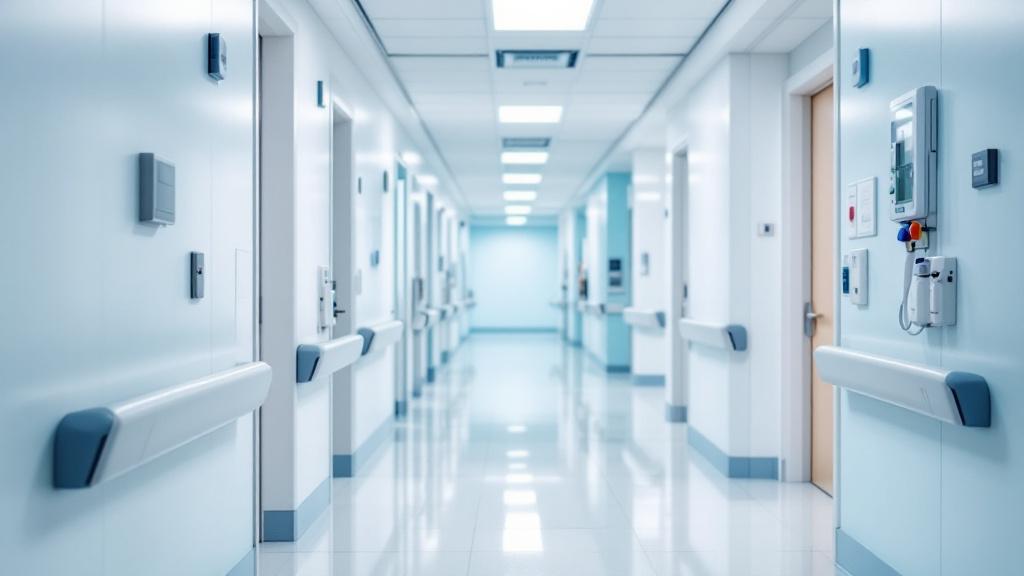How to Handle Medical Emergencies in Nursing Homes
Learn how to handle medical emergencies in nursing homes with key strategies for effective crisis management.
.jpg)
Understanding Crisis Management in Nursing Homes
Importance of Crisis Management
Crisis management is a critical aspect of operations in nursing homes. Effective management during emergencies can save lives, reduce the severity of incidents, and minimize chaos. It is essential for safeguarding the well-being of residents, staff, and visitors.

The significance of crisis management in nursing homes includes:
Challenges in Handling Medical Emergencies
Handling medical emergencies in nursing homes presents several challenges. Understanding these obstacles can lead to improved crisis readiness and better outcomes.
Common challenges include:
Addressing these challenges is crucial for establishing a robust framework for managing crises in nursing homes.
Establishing Emergency Protocols
Creating effective emergency protocols in nursing homes is crucial for ensuring the safety and well-being of residents. This involves developing a comprehensive emergency plan and training staff to respond efficiently during critical situations.
Developing a Comprehensive Emergency Plan
A well-structured emergency plan should encompass various potential crises that may arise within a nursing home. This plan must be readily accessible and communicated to all staff members. Key components of the plan include:
Regular reviews and updates of the emergency plan are essential to adapt to any changes in the facility or community.
Training Staff for Emergency Situations
Thorough training for staff is vital for effective crisis management in nursing homes. Staff members must be familiar with the emergency plan and be equipped to handle various situations. Training should include:
By ensuring staff receive adequate training and understand their roles in an emergency, nursing homes can improve their overall readiness for emergencies, enhancing the safety and security of residents.
Identifying Medical Emergencies
Recognizing medical emergencies in nursing homes is crucial for ensuring the safety and well-being of residents. Staff must be aware of common emergencies and the signs and symptoms associated with them for effective response and care.
Common Medical Emergencies in Nursing Homes
The following table highlights some of the most prevalent medical emergencies encountered in nursing homes:
Signs and Symptoms to Look Out For
Awareness of symptoms can facilitate quick recognition of medical emergencies. The table below lists key signs and symptoms for common emergencies.
By identifying these common medical emergencies and their respective signs, nursing home staff can act promptly and efficiently, ensuring that residents receive the necessary care without delay.
Responding to Emergencies
In nursing homes, responding effectively to medical emergencies is vital for the health and safety of residents. Prompt and appropriate action can make a significant difference in outcomes.
Immediate Steps to Take
When a medical emergency arises, several immediate actions should be taken to ensure the safety of residents. These steps are critical in managing the situation effectively.
Each of these steps is crucial to maintaining order and providing the necessary assistance to an individual in distress. Training staff to recognize when and how to implement these steps can significantly enhance the response to medical emergencies.
Contacting Medical Professionals and Authorities
Once immediate actions have been taken, contacting medical professionals and authorities is the next essential step. It is important to follow specific protocols to ensure that help arrives quickly.
Having a clear protocol for contacting medical professionals helps to streamline the process and ensures that critical information is conveyed quickly. This organized approach enhances the overall efficiency of responding to medical emergencies in nursing homes.
Communicating with Families and Residents
Effective communication is crucial in managing medical emergencies within nursing homes. Families and residents need to be kept informed about the situation and provided support to ensure their emotional well-being.
Keeping Families Informed
Maintaining clear communication with the families of residents during medical emergencies is essential. This involves providing timely updates about the situation and any necessary actions being taken.
Nursing homes should establish protocols for communicating with families to keep them engaged and informed about the health status of their loved ones.
Providing Support to Residents
Supporting residents during medical emergencies is vital for their psychological and emotional health. Staff should be trained to offer reassurance and assistance to residents who may feel anxious or confused during crises.
By prioritizing communication with families and providing support to residents, nursing homes can effectively manage medical emergencies and help maintain a sense of security and trust within the community.
Learning from Crisis Situations
To effectively manage crises in nursing homes, analyzing past emergencies is essential. This section discusses the importance of reviewing incidents and making necessary changes for future preparedness.
Conducting Post-Emergency Reviews
After a medical emergency occurs, conducting a review is vital. This review involves collecting information from all staff involved and identifying what worked well and what did not. Key elements to focus on include:
Documenting these findings helps in recognizing effective practices and areas needing improvement.
Implementing Changes for Future Preparedness
Based on the insights gained from post-emergency reviews, changes should be implemented to enhance future crisis responses. This process may involve several steps:
By continuously refining procedures and training, nursing homes can better prepare for and handle future medical emergencies, ultimately ensuring a safer environment for residents.
Sources
https://www.hbrhc.com/emergency-preparedness-in-nursing-homes
https://www.linkedin.com/handling-emergency-situations-guide-nurses-america-ray-washington
https://thefallshome.com/tips-to-handle-medical-emergencies-as-a-caregiver

How to Plan for Long-Term Home Care Services

How Home Team Helps Families Make Informed Care Decisions

How Home Team's Caregivers Provide Peace of Mind for Families



